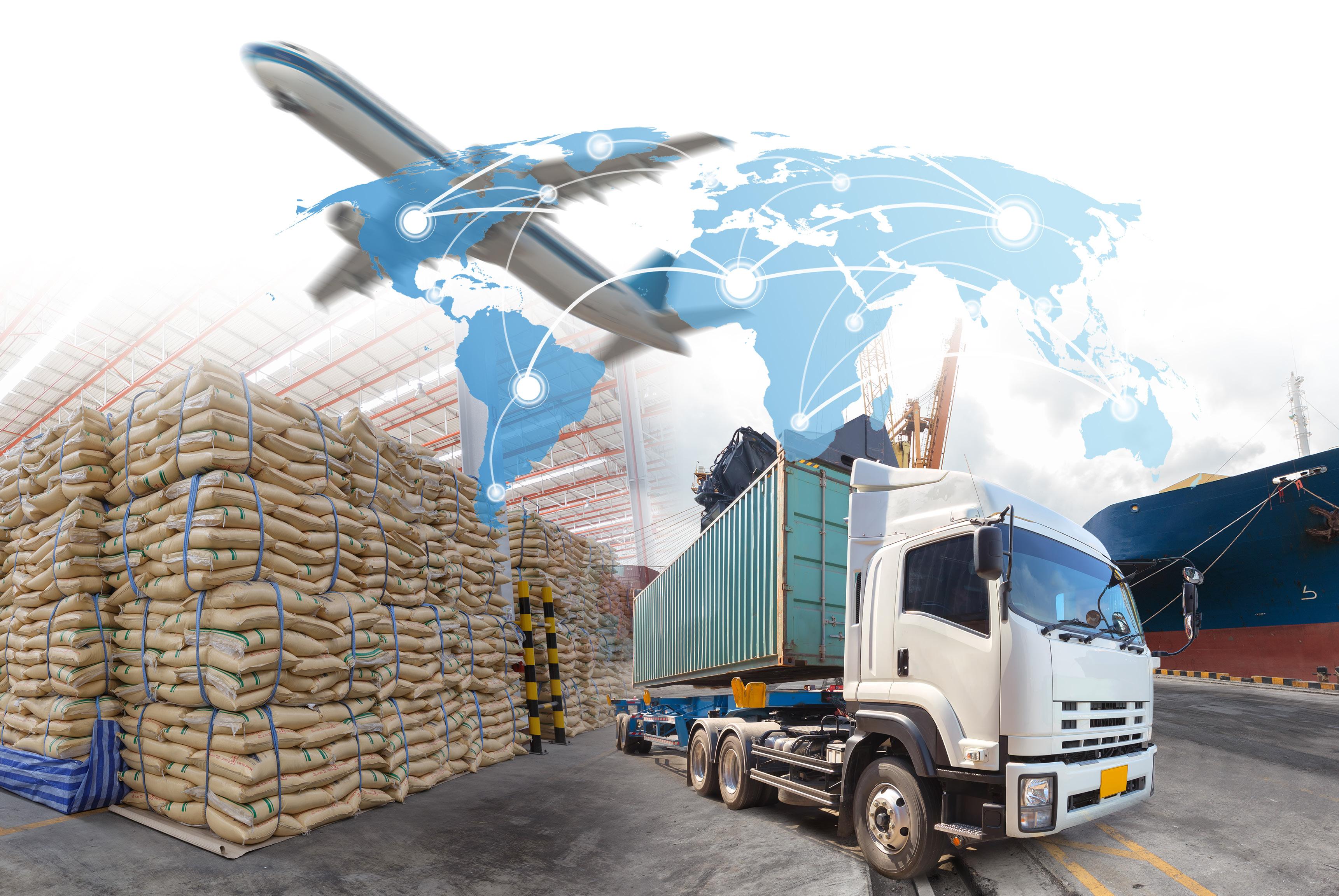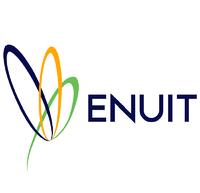Managing





The supply chains for bulk commodities, including agricultural, metals/ores and some energies, are complex – usually necessitating transportation and storage using trucks, trains, ships, barges, pipelines, and terminals/storage facilities. These movements, and the assets utilized to make them, introduce and accumulate both cost and risk to the commodities owners with each step in the chain.
Additionally, as these commodities transit the supply chain, they may undergo changes that will impact their value, both as traded commodities and as a stock or inventory. These events can include transformations to finished products (such as refining crude oil into numerous petroleum products or grains milled into flour) and repackaging from bulk loads into smaller containers such as bags for wholesale or retail sales.
Moreover, along each step of the way, from the commodities arriving at various aggregation points to final delivery to purchaser, the value of that commodity will change with each event. That value must be updated and recorded in the company’s systems - both for accounting purposes and to track the financial
performance and the risks of the supply/trading group.
Exacerbating the complexities of managing these supply chains, continuing globalization has led to the lengthening of supply chains across regions of the globe as well as an increase in the number of options available for movements at any time. Even under “normal” market conditions, capturing and valuing the costs and values of supplies is difficult and complex. However, as recent events (such as the global pandemic and the war in Europe) have shown, these long, complex supply chains have become more exposed to disruptions from both natural disasters and geopolitical upsets, increasing risks, both operational and financial.
Commodity merchants have traditionally relied on Enterprise Resource Planning (or ERP) solutions to capture their commercial activities. These solutions are usually able to model complex supply chains and associated assets, capture movements/deliveries for contract fulfillment and inventory purposes and ultimately measure the profitability of the company activities, though usually days or weeks after the fact. Unfortunately, as more merchants have recognized the erosive impacts of inflation on both finished products and inputs into their production processes and of commodity market price volatilities on supplies, having only an after-the-fact view of their business provides little ability to adjust production processes such as adjusting recipes, quickly seek out alternative lower cost supplies, or improve margins on commodity purchases via hedging.
Traditionally, those companies that buy, store, transform and sell have relied on traditional ERP products which, while good for creating the accounting entries associated with the commercial activities of their users, usually lack any real capabilities in Risk Management. Further, given their accounting orientation, these systems are essentially after-thefact solutions and are not architected to provide daily operational and financial performance metrics, including mark to market, position or risk. Critically, many ERP solutions lack a recognizable and comprehensive trade capture capability for physical and financial commodities and lack the reporting structures that traders and risk managers really need. Indeed, for commodity-centric businesses, these ERP solutions may be cumbersome, expensive and sub-optimal solutions.
Given these shortcomings, some commodity-centric merchant companies have adopted CTRM solutions to supplement their ERP or accounting solutions.
Unfortunately, given the inability of most CTRMs to capture the details of many types of physical movements, these companies have needed to model those movements in their ERP solution and then create complex integrations or rely on high latency file downloads to move the resultant values associated with those activities into the CTRM solution for risk purposes and a consolidated view of daily financial performance.
Further, experience has shown that the complexities of integrating data and business process requirements of these two disparate solutions systems is difficult due to a wide variety of issues, including differing definitions of trade/contract/book structures, mismatches in timeliness of data, differences in accounting structures, and more. These issues have proven difficult to overcome, and ultimately provide costly and functionally suboptimal solutions for managing complex commodities businesses.
Commodity Management or CM is a category of
software applications that has been developed to address these gaps between CTRM and ERP, and the challenges of attempting to integrate the two.
Much like ERP solutions, CM focuses primarily on valuing and accounting for the physical movements/ handling of commodities and the costs and revenues associated with them and as such, must be architected to capture and manage large volumes of transactions. For example, a petroleum products company may operate a wide network of terminals, with each terminal seeing several hundred truck movements daily, or even tens of thousands per month. Each truck movement – loading of product at the supply point, transit, and delivery – implies an underlying agreement with payment
terms and volumetric obligations that are required to be met prior to final pricing. And each movement will result in inventory changes, both volumetric and value – including potentially volumes of various grades of products in terminals and in transit.
That said, CM solutions also provide the necessary capabilities to manage hedging activities and provide the analytical insights, such as mark-to-market, position valuations, and hedge effectiveness necessary to measure commercial performance. Ultimately, CM provides commodity merchant companies a solution that will calculate values based on events, manage large volumes of transactions, and provide a same day view of positions and financial performance.
Commodity market analyst firm, Commodity Technology Advisory, defines Commodity Management or CM as the superset of software solutions that encompasses CTRM and ERP (Enterprise resource planning software) where1:
1. ERP use in commodities naturally focuses on physical commodities and emphasizes production/ procurement/origination, movement, storage, and handling of bulk and packaged commodities. This will usually include contract management, procurement, production, logistics, inventory management, assays/chemical analysis, pricing and fixation, hedging, settlements, and accounting. The primary users of this type of software are producers, industrial consumers, and processers.
2. CTRM will have a trade-centric design with a focus on capturing and tracking both physical and financial trades, with configurable book and reporting structures, position calculation and valuation, PnL, and various aspects of risk including market and credit risk. The primary users of CTRM software are traders and merchants.
1) https://www.ctrmcenter.com/publications/white-papers/ctrmcm-architecture-approach-20-year-old-condundrum/
Despite the apparent demarcation between the two categories, ComTech identifies considerable overlap between ERP and CTRM in practice. In reality, some CTRM solutions will offer a good deal of ERP-type functionality, while ERP solutions are increasingly migrating into the trading and risk management arena. However, simply having some overlapping components does not address the complex needs of commodity centric companies that move, aggregate, transform and market commodities.
It is these complexities that must be considered when seeking out a solution in order to identify those applications that can truly address the needs of a specific complex commodity-centric businesses. These will include:
• The commodities to be managed, the quality characteristics of those commodities (as quality will impact value, pricing and yields), and the nature of their unique supply chain(s) including modes of transport, distances, currencies, etc.
• The assets employed in the supply chain(s) including terminals, vehicles, vessels, processing facilities, etc.
• Geographic differences including any unique business processes, language requirements, etc.
• The type of company using the software (industry segment coverage)
• Local, regional and/or national regulations that impact operations, reporting, etc.
Given their need to address complex commodity movements and event-based changes in value and costs along the supply chain, Commodity Management

Source - https://www.ctrmcenter.com/publications/white-papers/ctrmcmarchitecture-approach-20-year-old-condundrum/
(CM) solutions have a broader footprint than traditional CTRM. Ultimately, CM offers the trade and market risk management features of CTRM software but extended with integrated ERP-like functions as well that can include:
• Contract management and origination functionality that addresses the unique needs of bulk commodity merchants, including sales or purchase agreements that price after full delivery.
• Multi-modal logistics, potentially including vessel management, estimated and actual cost tracking, documentation and more.
• Inventory management across the supply chain, including tanks, silos, elevators, stockpiles, and inventory in transit. This may include valuations based on quality factor adjustments as well as volumetrics.
• Traceability allowing the tracking of materials from source to point of sale for regulatory purposes,
• Quality management, including tracking each raw material and quality details at each stage (e.g. receipt, blending, assays, packaging, etc.).
• Accounting, financials and treasury.

In 2019 ENUIT worked with a multi-national, cross commodities trading and merchant company to develop and build into the core ENTRADE system the functionality required to support an entire commodity trading and merchant business from origination to accounting, including the specific event-based supply chain activities commonly addressed in Enterprise Resource Planning (ERP) solutions.
This led to the creation of ENTRADE Unite for Commodity Management (CM), one of the few solutions available to incorporate all aspects of a fully featured Commodity Trading Risk Management (CTRM / ETRM) system with broad capabilities of an Enterprise Resource Planning (ERP) solution directly in its core. The resultant solution provides a single platform without complex data mappings and manual interventions required by integrations or high latency file transfers.
ENTRADE Unite provides an integrated solution that supports today’s complex supply chain needs of any trading organization, giving companies the opportunity to integrate trading and risk data with supply chain functions.
Where ENTRADE is an ETRM/CTRM application, which calculates and reports PNL, Positions at Risk, and Credit Exposure. The Unite extension manages inventory cost and value due to supply chain and logistics events.
Enuit, founded in 2008, aims to deliver affordable and effective trade management software with Entrade. This tool supports the complete transaction lifecycle, from deal finalization to billing. As a comprehensive ETRM/CTRM and CM solution, ENTRADE® caters to all commodities, users, and features on a single platform.
Key ENTRADE® features include:
• Comprehensive commodity support, encompassing NGLs, LNG, natural gas, power, renewables, crude oil, refined products, metals, and coal.
• A holistic view of renewable energy transactions for sustainable business operations.
• Detailed transaction lifecycle visibility, from deal discussions to invoice issuance.
• An analytical pricing engine designed for complex pricing structures.
• Adaptability for diverse trading scenarios, including both physical and financial commodities.
• Streamlined processes for deal recording,
scheduling, cost tracking, inventory management, valuation, settlements, invoicing, and risk monitoring.
• In-depth logistics support, detailing costs and movements from purchase to delivery.
• Transparent reporting with both standard and adhoc reporting capabilities, aiding swift decisionmaking.
Furthermore, ENTRADE®’s transparent data model grants clients a clear understanding of their data storage locations, offering enhanced control.
In essence, ENTRADE® isn’t just a tool - it’s a pathway to streamlined operations, echoing Enuit’s dedication to supporting clients throughout their growth journey.

Commodity Technology Advisory is the leading analyst organization covering the ETRM and CTRM markets. We provide the invaluable insights into the issues and trends affecting the users and providers of the technologies that are crucial for success in the constantly evolving global commodities markets.
Patrick Reames and Gary Vasey head our team, whose combined 60-plus years in the energy and commodities markets, provides depth of understanding of the market and its issues that is unmatched and unrivaled by any analyst group.
For more information, please visit: www.comtechadvisory.com
ComTech Advisory also hosts the CTRMCenter, your online portal with news and views about commodity markets and technology as well as a comprehensive online directory of software and services providers. Please visit the CTRMCenter at: www.ctrmcenter.com
PO Box 1269, New Waverly, TX 77358
+1 832 687 4736
Prague, Czech Republic
+420 775 718 112
ComTechAdvisory.com
Email: info@comtechadvisory.com